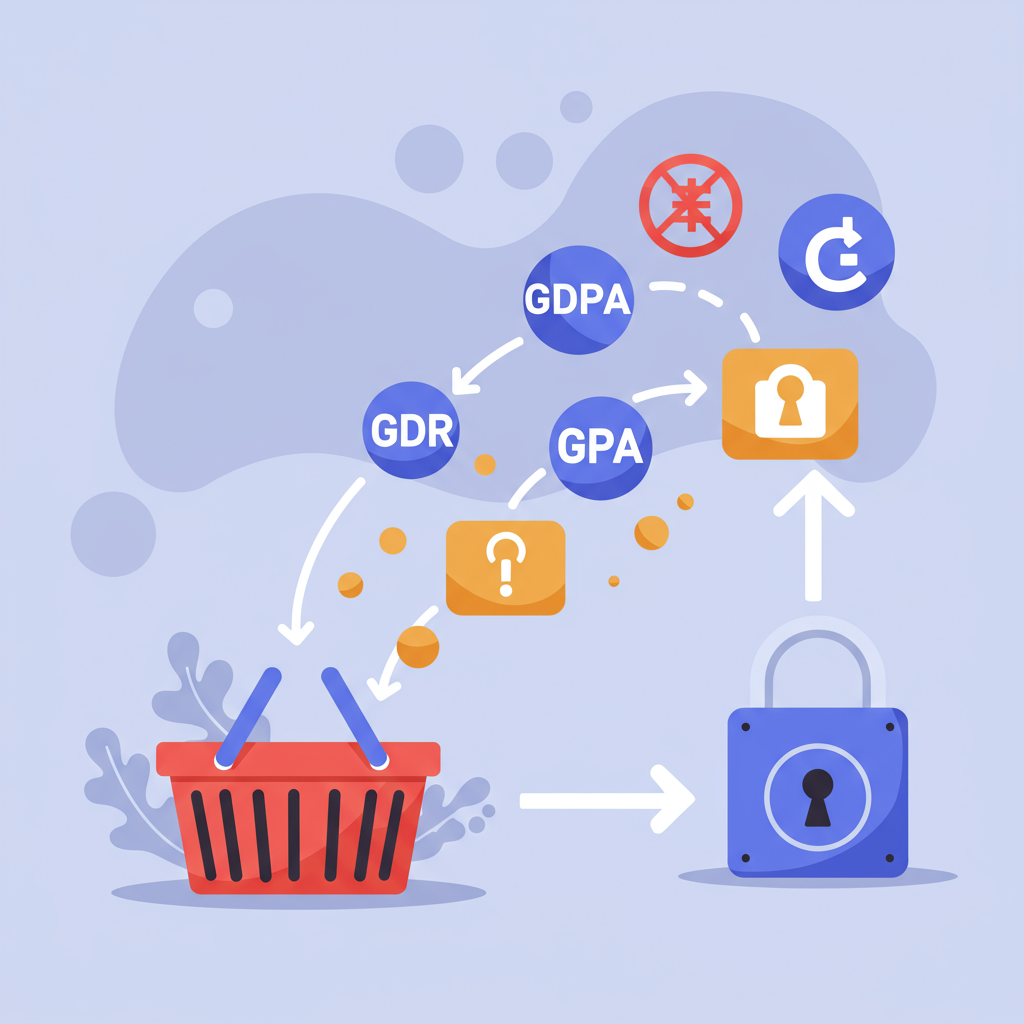Navigating Data Management and Compliance for Your E-commerce Store
As a Shopify merchant, I’ve come to realize that managing customer data isn’t just about sales and marketing; it’s fundamentally about trust and compliance.
In today’s digital landscape, data privacy has become a paramount concern for consumers and regulators alike, and rightly so.
I often think about how every interaction on my store, from a simple browse to a completed purchase, generates valuable data.
This data, while incredibly useful for understanding my customers and optimizing my business, also carries significant responsibility.
My goal with this article is to share my insights and guide you through the essential aspects of Shopify customer data export and privacy tools.
I want to help you navigate the complexities of data management, ensuring you’re not only compliant but also building a stronger, more trustworthy relationship with your customers.
First, let’s talk about why I might need to export customer data from my Shopify store.
There are several reasons: perhaps I’m performing an in-depth analysis of my customer base, migrating to a new CRM system, or fulfilling a data subject access request (DSAR).
Shopify provides several built-in methods to export customer data, primarily through CSV files directly from the admin panel.
To export my customer list, I simply navigate to “Customers” in my Shopify admin, select the customers I wish to export (or all of them), and click “Export.”
Shopify then gives me options for the type of export, usually a CSV file, which I can open with spreadsheet software like Excel or Google Sheets.
This CSV file typically includes details like customer names, email addresses, phone numbers, addresses, and their order history summary.
It’s important to remember that this export provides a snapshot of my customer list, not necessarily every single piece of data associated with them, such as detailed browsing history.
Beyond just the customer list, I often find myself needing to export order data, which also contains a wealth of customer information linked to specific transactions.
I can do this by going to “Orders” in my Shopify admin, selecting the relevant orders, and again, clicking the “Export” button.
The order export CSV is incredibly detailed, containing customer shipping and billing addresses, contact information, and the specific items they purchased.
While these manual CSV exports are straightforward for basic needs, I’ve learned that they can be limiting for more complex data requirements or automated processes.
For more advanced data export needs, I often turn to the Shopify App Store, where a variety of apps offer enhanced export functionalities.
These apps can provide scheduled exports, custom data fields, integration with other platforms, and more granular control over the data format.
For instance, some apps allow me to export specific customer segments, or even combine data from multiple sources within my Shopify ecosystem.
For highly customized or large-scale data operations, I know that the Shopify API (Application Programming Interface) is the ultimate solution.
This requires development knowledge, but it allows me to programmatically access and export virtually any data point available in my store, offering unparalleled flexibility.
Now, let’s shift our focus to the critical aspect of data privacy and the tools Shopify provides to help me comply with regulations.
Regulations like the General Data Protection Regulation (GDPR) in Europe and the California Consumer Privacy Act (CCPA) have fundamentally changed how I must handle customer data.
These laws grant individuals significant rights over their personal data, including the right to access, rectify, and erase their information.
Shopify has built-in features to help me address these data subject requests, which are often initiated directly by customers.
When a customer requests their data or asks for it to be deleted, I can manage these requests directly within my Shopify admin under “Customers” and then “Privacy.”
Shopify provides tools to facilitate the export of a customer’s personal data in a machine-readable format or to initiate the process of redacting or deleting their data.
It’s my responsibility to ensure I respond to these requests promptly and accurately, adhering to the timelines stipulated by relevant privacy laws.
Beyond specific requests, I also need to consider how I manage customer consent, especially for marketing communications and cookie usage.
Shopify’s platform allows for clear opt-in mechanisms for marketing, and I often use third-party apps to manage cookie consent banners effectively.
I always make sure my privacy policy is clear, comprehensive, and easily accessible on my store, detailing what data I collect, why, and how it’s used.
Regular data audits are also something I practice; I periodically review what data I’m collecting and whether it’s still necessary for my business operations.
I also ensure that any third-party apps I integrate with my Shopify store are compliant with privacy regulations and have robust data handling practices.
This often involves reviewing their privacy policies and, where necessary, signing Data Processing Agreements (DPAs) with them.
Security is another pillar of data privacy. I always use strong, unique passwords, enable two-factor authentication (2FA) for all my Shopify accounts, and limit staff access to only what’s necessary.
Training my team on data privacy best practices is also crucial; every employee who handles customer data needs to understand their role in protecting it.
In the unfortunate event of a data breach, I know I must act swiftly, notify affected parties and relevant authorities as required by law, and take immediate steps to mitigate damage.
What do you think about the importance of these data privacy tools and practices for your own Shopify store? I’d love to hear your perspective.
In conclusion, managing customer data and ensuring privacy compliance is an ongoing journey, not a one-time task.
By leveraging Shopify’s built-in tools, exploring advanced app solutions, and staying informed about privacy regulations, I can build a more secure and trustworthy e-commerce business.
My commitment to data privacy not only protects my customers but also strengthens my brand’s reputation in the long run.






